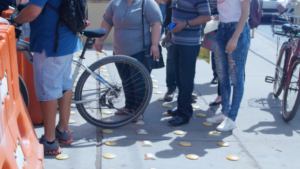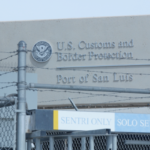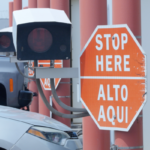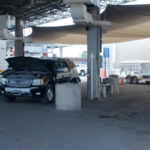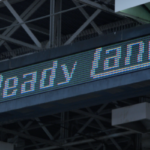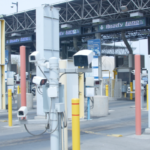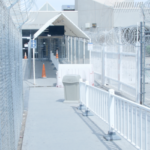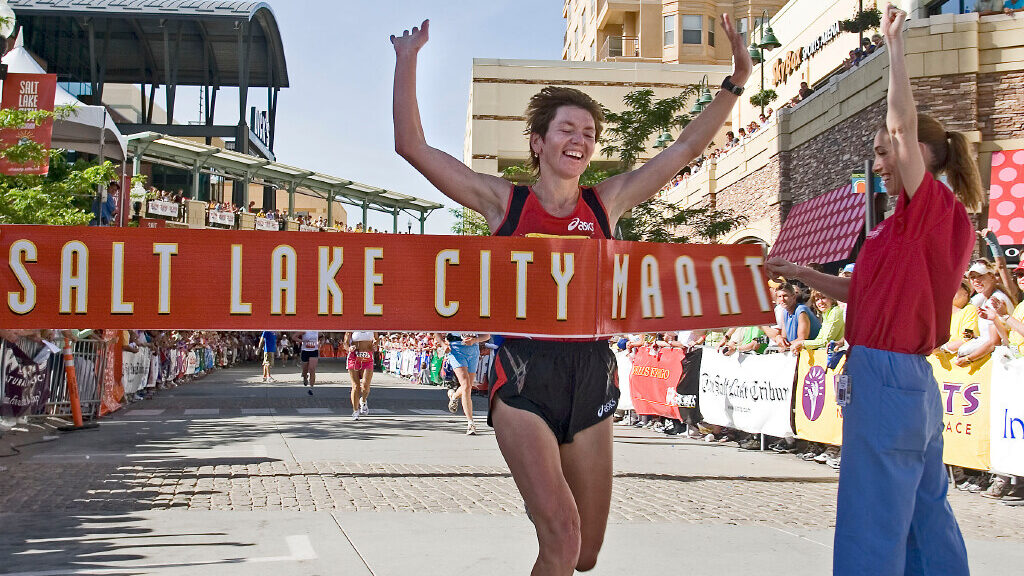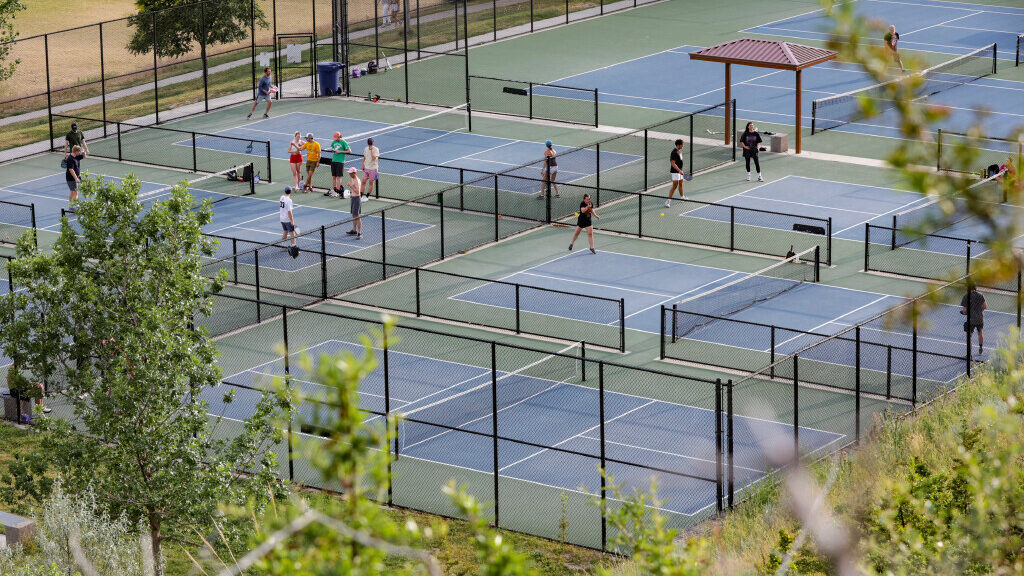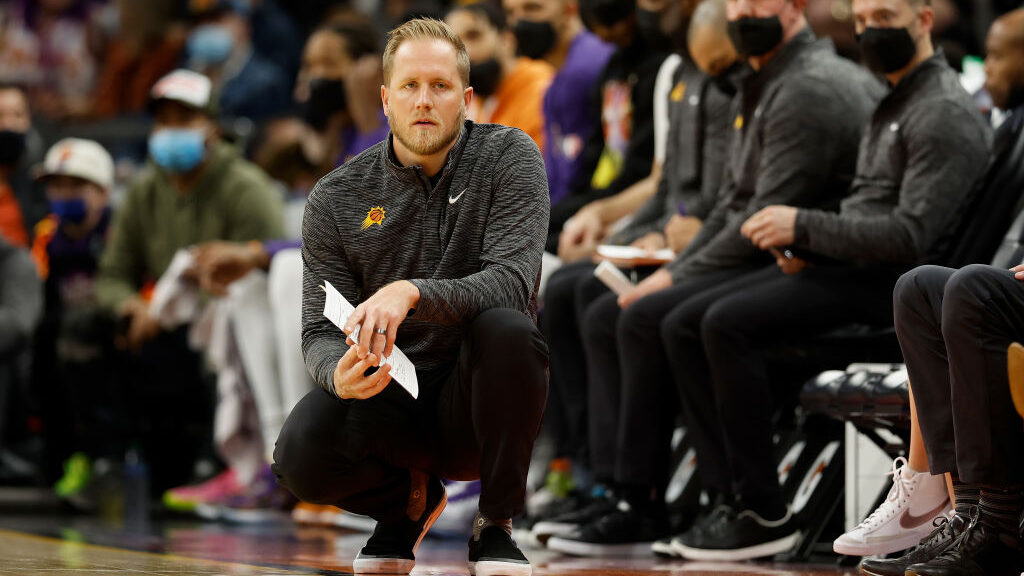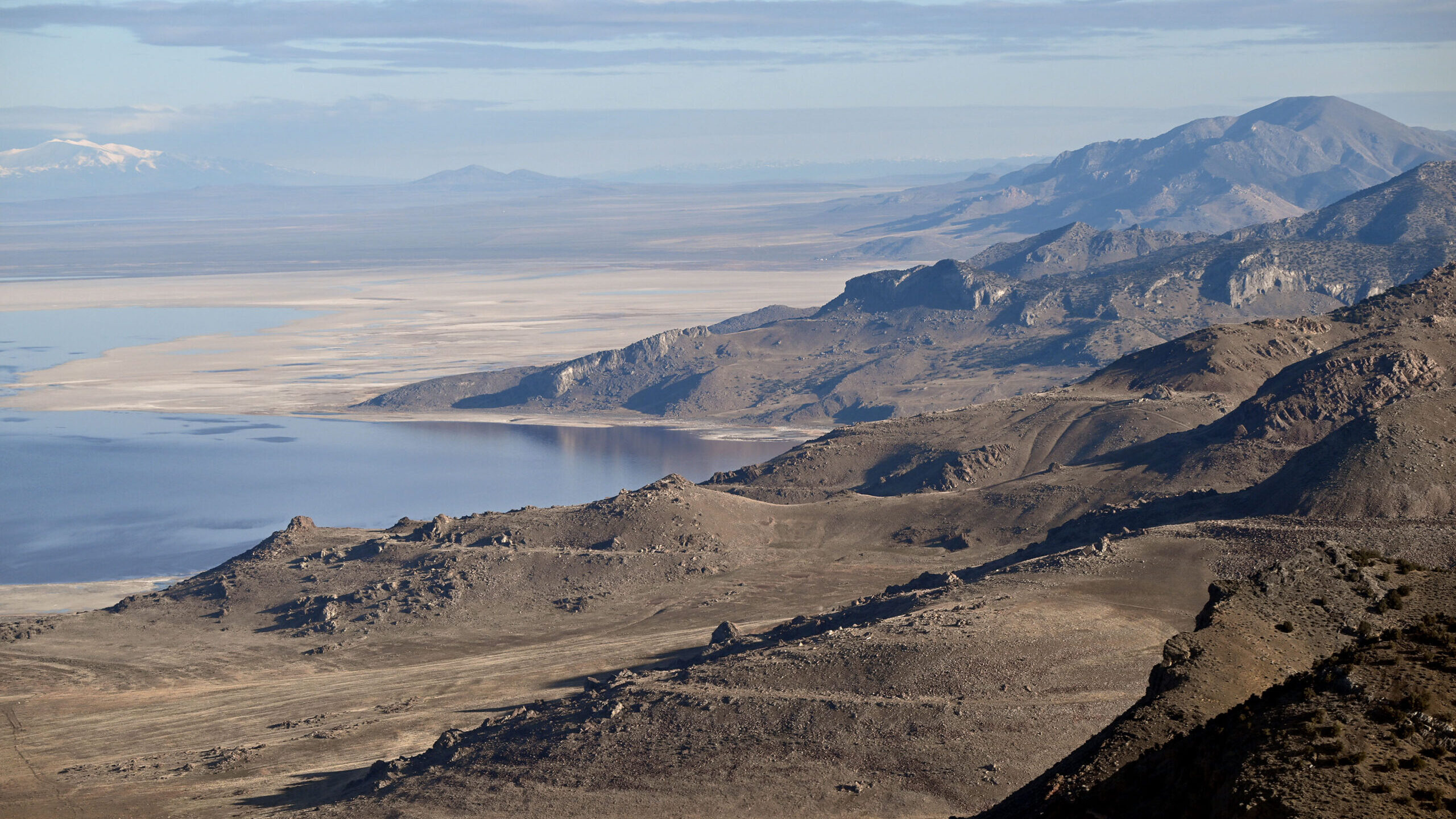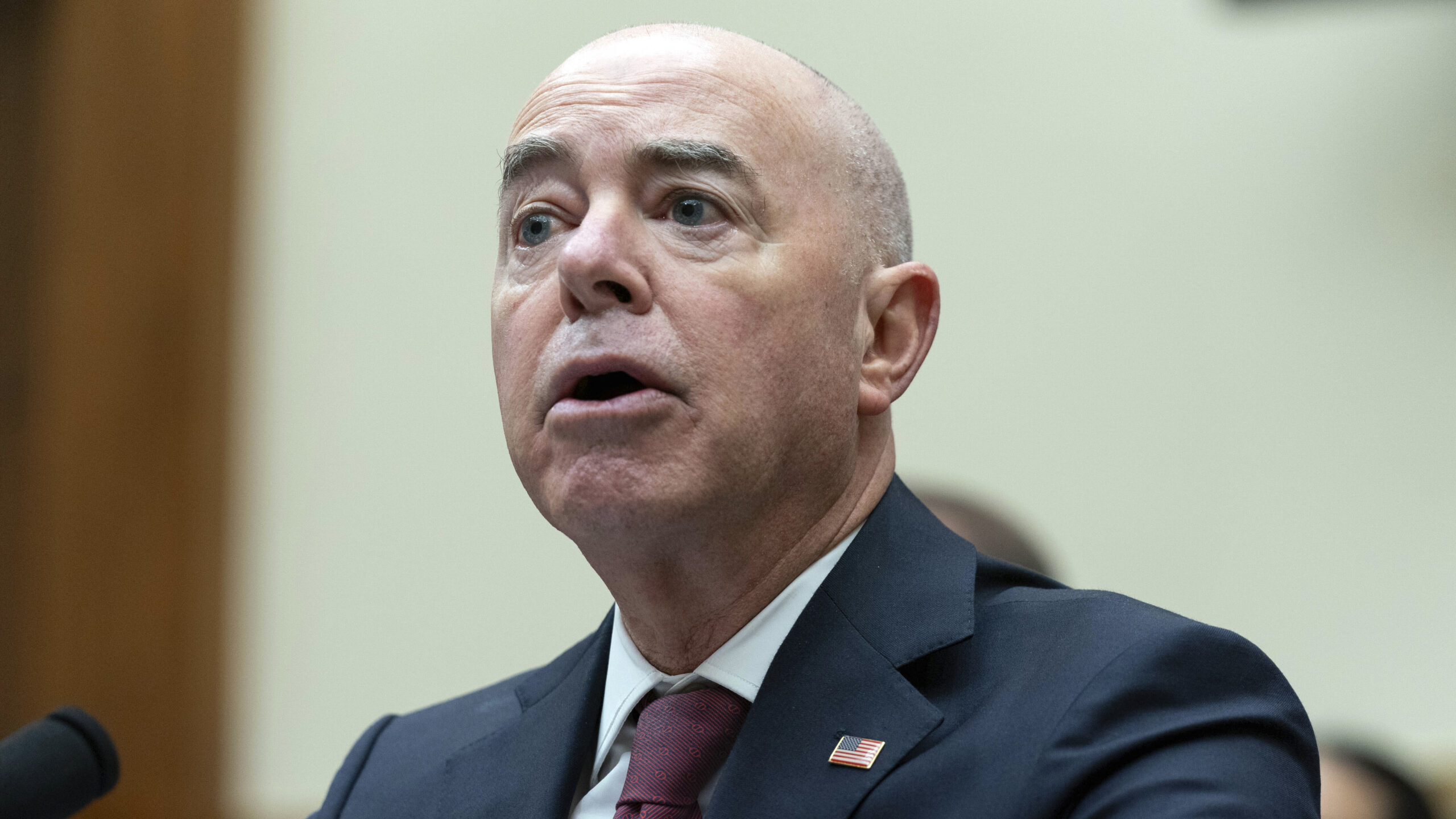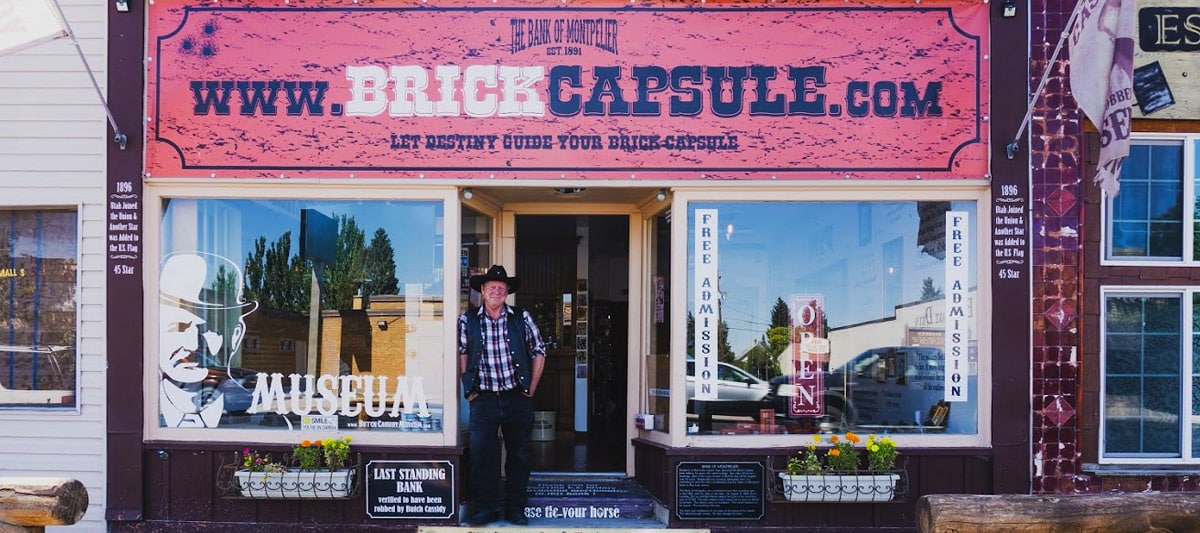Unrest at the border illustrates immigration crisis
Apr 17, 2019, 10:51 AM
KSL’s sister station in Phoenix, KTAR News, is covering the situation at the Arizona-Mexico border. This week is a special series on the Immigration Crisis.
SAN LUIS PORT OF ENTRY, ARIZONA – Every day during the winter and early spring, farm workers are among the thousands of people who cross legally from Mexico into the U.S. at the San Luis Port of Entry.
It’s about 25 miles southwest of Yuma, Arizona, and offers legal pedestrian and vehicle passage between the two countries.
Most farm workers are Mexican nationals, but some are U.S. citizens who live more affordable south of the border.
They harvest the “winter produce” grown throughout Yuma County: lettuce, cauliflower, cucumbers, spinach and more.
They work at least eight hours a day on the farms and sometimes even put in longer days.
But before that, they can spend eight hours in line – starting at midnight – at the San Luis Port of Entry, waiting to enter the U.S. to earn their living.
That makes for a 16-hour day.
“They’ll just go home, see their family and eat, and just get back in line,” said Rick Sellers, owner of Waymon Farms in Somerton. “My individuals are loyal, and they need the income, and I’ve got the work for them.”
The farm laborers compete with other workers, truckers, shoppers and visitors cramming through the port into Yuma County and onward to other parts of Arizona and beyond.
Now, they’re competing with migrants coming through the port without legal documentation, intending to surrender to U.S. authorities on their path to claiming asylum or credible fear of returning to their home countries in Central America.
That slows down the lines of cars and pedestrians, which KTAR News witnessed during its trip to the port in late March.
The port’s director, U.S. Customs and Border Protection’s John Schwamm, gave us a tour.
“If this backs up for any reason here, right now, or if I have to close a lane, like I have right now, either due to budgetary reasons or I have a seizure going on, that traffic’s going to back up over there,” Schwamm said.
Inspection is a thorough process.
“Each and every one of those people has to be inspected by an officer,” he said. “What’s the purpose of your trip? Are you who you say you are? Are you admissible in the United States? Do you have the documents to do that?
“If you’re a United States citizen, show me a passport.”
The cars are subject to the department’s license plate readers and radiation detection monitors to find drugs – like fentanyl, an opioid that is hazardous to the touch – and even weapons of mass destruction.
“We must now wear safety suits [more regularly] because we handle things that could kill us in an instant,” Schwamm said. “I’ve already had one officer exposed to methamphetamine accidentally by a package blowing up.”
Fortunately, Schwamm said the officer recovered from her injuries.
The port was built in 1985. It was never designed to handle 2.4 million pedestrians on one walkway and 3.1 million cars in six lanes, per year, let alone thousands of migrants – mostly in families – who must be screened once they touch U.S. soil.
The asylum seekers force officers to come off the lines and put off searching cargo and vehicles for drugs and human trafficking, among other crimes.
“We have people claiming they are teenagers when they are actually 18 or 19 years old,” Schwamm said, noting that being of legal age could change their asylum claims.
He wishes Congress would build him a new port because retrofitting it with new technology would be more expensive and less efficient.
But Schwamm is not getting more help with the streams of migrants who arrive either on foot via smugglers or even commercial buses.
“It can only take so much,” Schwamm said. “There’s only so much I can put through that funnel.”
How one town relies on immigration
The first city after the port is San Luis, a city of 37,000 that cannot survive without legal, quick cross-border traffic.
“Seventy to 90 percent of San Luis residents have relatives in Mexico,” said Mayor Jerry Sanchez, a physician’s assistant who practices just up the street from the port. “They’re crossing over, but they’re thinking about it twice, and vice versa.”
Both Mexican and U.S. residents must endure the same eight-hour lines – at their peak – to cross. And while they’re waiting, they’re not spending money.
“We depend on sales taxes,” Sanchez said. “We don’t have property taxes.”
Sanchez explained that Christmas 2018 had been the worst in recent memory for San Luis because of plummeting retail sales, leading to businesses closing and jobs lost.
And if his small city is losing money due to an overcrowded, understaffed port, Sanchez believes other border cities in Arizona are feeling the same pain.
In recent weeks, President Donald Trump had threatened – without a firm timeline – to close the ports of entry until Mexico does more to stem the tides of immigrants coming from Central America.
This has heightened concerns with leaders across the state, including Gov. Doug Ducey, about the impact on Arizona’s economy.
On April 1, Ducey said he did not support a shutdown of the border.
“Mexico is our No. 1 trading partner, times four,” said Ducey.
Two days later Ducey met with President Trump, and after his visit, he told reporters he would be supportive if the border were to close and would like it to be “as short as possible.”
Julie Murphree with the Arizona Farm Bureau told KTAR News Mexico purchases nearly $200 million worth of the state’s agricultural exports, including produce and beef.
“It would be catastrophic to the Arizona economy if the border was shut down,” Glenn Hamer with the Arizona Chamber told KTAR News.
He referenced Arizona’s $15.5 billion trading relationship with Mexico each year.
“Mexico far and away is Arizona’s largest trading partner,” he added. “We export more goods to Mexico than the next four countries combined.”
Philip Garcia with Visit Tucson said a border closure would have been disastrous, as the tourism agency reports a billion dollar economic impact from 2.5 million Mexican tourists each year.
“They pay sales tax, so they’re helping pay for police, firefighters, libraries and roads,” said Garcia.
Nonprofits feel the strain
The swarms of migrants are now adding strain in Yuma, as federal agents release about 100 of them into the city each day, just like they have done in Phoenix and Tucson. As of Monday, Yuma County Sheriff Leon Wilmot estimates Border Patrol has released about 1,500 Central American migrants into Yuma and Blythe, Calif. since March 28.
“It’s really impacted our nonprofits who, in a lot of ways, dropped everything else they’re doing in order to meet this need,” said Yuma Mayor Doug Nicholls, pointing to the Salvation Army, Catholic Community Services, Yuma Community Food Bank, among others.
“Those nonprofits need to service those people while they’re in town and help them get their transportation,” Nicholls said.
After a meeting with Republican Sen. Martha McSally on April 1, Nicholls said he told her the federal government should do more to ensure migrants have means for transport out of his city, so they don’t become homeless.
In San Luis, Sanchez claimed that too many migrants are abusing U.S. laws to the detriment of migrants trying to enter the country legally.
He called for more immigration judges closer to the border so they can process cases faster.
“Just because ‘I’m not doing well in my country’ does not justify political asylum,” Sanchez said.
Still, Sanchez welcomed news that the Department of Defense will spend part of $1 billion to build up a wall in the Yuma Border Patrol Sector.
“We already have a barrier, but if this is going to make it better, so be it,” Sanchez said. “My biggest fear is that people are going focus on the barrier and forget about the ports.”
Wall first
Every stakeholder KTAR News interviewed for this series on Arizona’s immigration crisis agreed to a multi-pronged solution that includes more or better walls, bigger and better ports, more immigration judges, and tighter asylum laws.
But Yuma County Sheriff Leon Wilmot was clear: A border wall needs to come first.
He said it worked 14 years ago, when the U.S. saw surges in single Mexican men rushing into the country.
“All of the infrastructure put into place in 2005-06 was designed because of the cartels smuggling dope across our border and stealing vehicles, stealing farm tractors, and doing rapes, robberies and homicides,” Wilmot said. “It’s not something we want to get back into.
“Having that portion of the infrastructure, as well as the other technology, helped cut that situation that we were dealing with.”
In the current immigration crisis, the immigrants who are held – mostly for drug crimes – cost his jail $1.1 million each year. For example, two of the immigrants required dialysis three days a week.
Wilmot says he got a federal reimbursement of $56,000.
“The feds aren’t paying their bills now,” he said. “And now we’re looking at a situation where they’re going to put more impact on the local communities by releasing families into our communities.”
Wilmot connected the current immigration crisis to America’s fentanyl and synthetic opioid crises, which have claimed more than 70,000 lives.
One seizure at a drug tunnel along the border in August netted 6.5 pounds of fentanyl.
“That was enough powder to kill the whole population of the state of Arizona,” Wilmot said.
“The fentanyl epidemic is hitting San Luis hard,” Mayor Jerry Sanchez said. “We do have our overdoses in kids, and it’s poisoning our kids. It’s affecting our neighborhoods and schools.
“I’m having to put our major resources in trying to fight the fentanyl epidemic.”
Both men say the illegal drugs slip through the cracks of the ports and through unsecured parts of the southern border.
In both cases, officers for Customs and Border Protection and Border Patrol have been reassigned to process, feed and clothe migrants.
“The asylum laws need to be changed,” Wilmot says. “That’s obvious because they’re being exploited each and every day by these groups. Nine out of ten asylum claims are denied by the judges, once they get there.
“ICE doesn’t have enough time – 20 days – to determine if these are fake families.”
Wilmot also wants more immigration judges – even via video – to process cases from the Yuma Federal Courthouse.
Legal labor suffers
Good help is already hard to find for Jonathan Lines, the former chairman of the Arizona Republican Party.
He lives in Yuma where he just built his first housing subdivision.
“We simply don’t have enough people who are legal,” Lines said.
Some of the migrant workers Lines needs don’t want to wait in eight-hour lines at the port.
He supports legislation that would allow Mexican workers to stay 75 miles into the U.S. so they wouldn’t have to go home every night.
“That lessens some of the restrictions put into place by the Department of Labor and the Department of Agriculture,” he said.
Rep. Russ Jones, R-Yuma, who also owns a trucking company, said he has the same struggles with labor.
But Jones would like to see his family more often across the border in Mexicali, a 75-minute drive west from Yuma – without waiting at a slow, congested port.
“You really have to plan it in advance because you know you’re going to spend hours in a line trying to come home,” Jones said.
“It’s really hard on the social structure of the border.”
‘It’s about doing the right thing’
Another common feeling these stakeholders shared was neglect from their federal leaders.
They entertained visits from former Homeland Security Secretary Kirstjen Nielsen and President Donald Trump in early April, as well as members of Congress from Arizona’s delegation and other federal officials.
But the stakeholders say none of them are doing anything to fix the problem.
“This is not about Democrats or Republicans,” Sanchez said. “It’s about doing the right thing.”
Wilmot agreed. “We’ve been ringing this bell since September of last year. They ignored it.”


